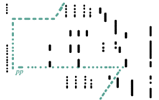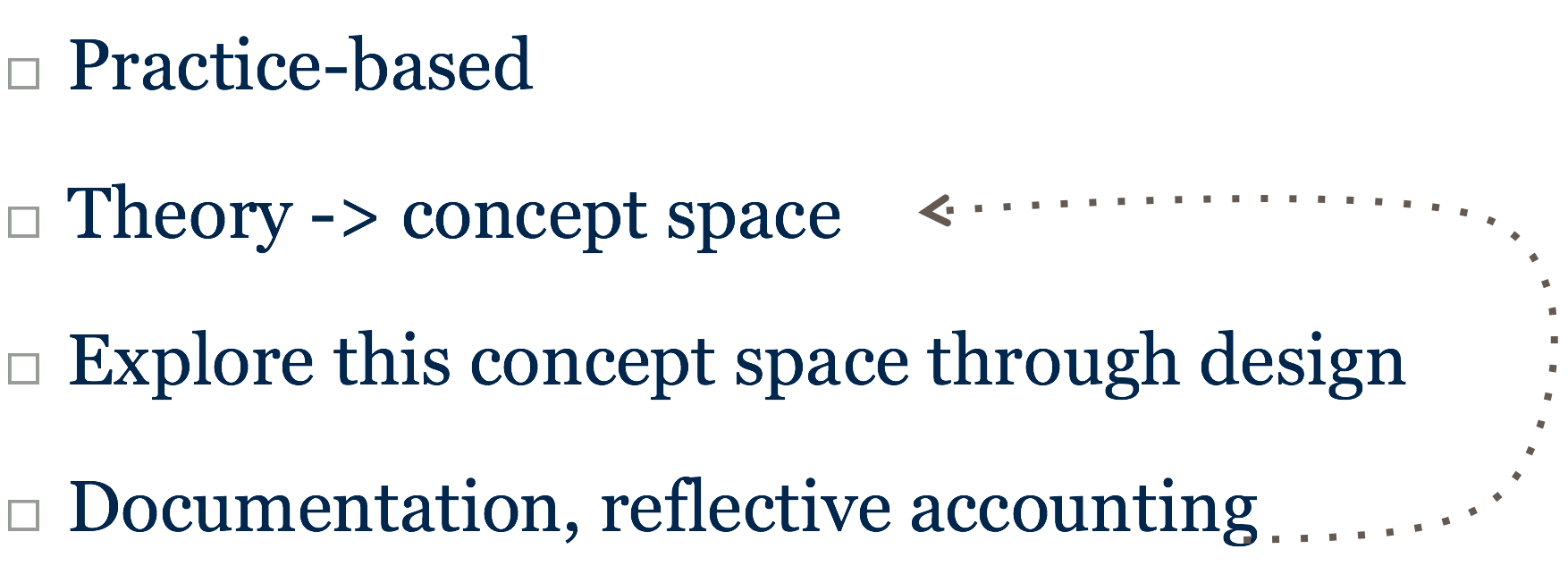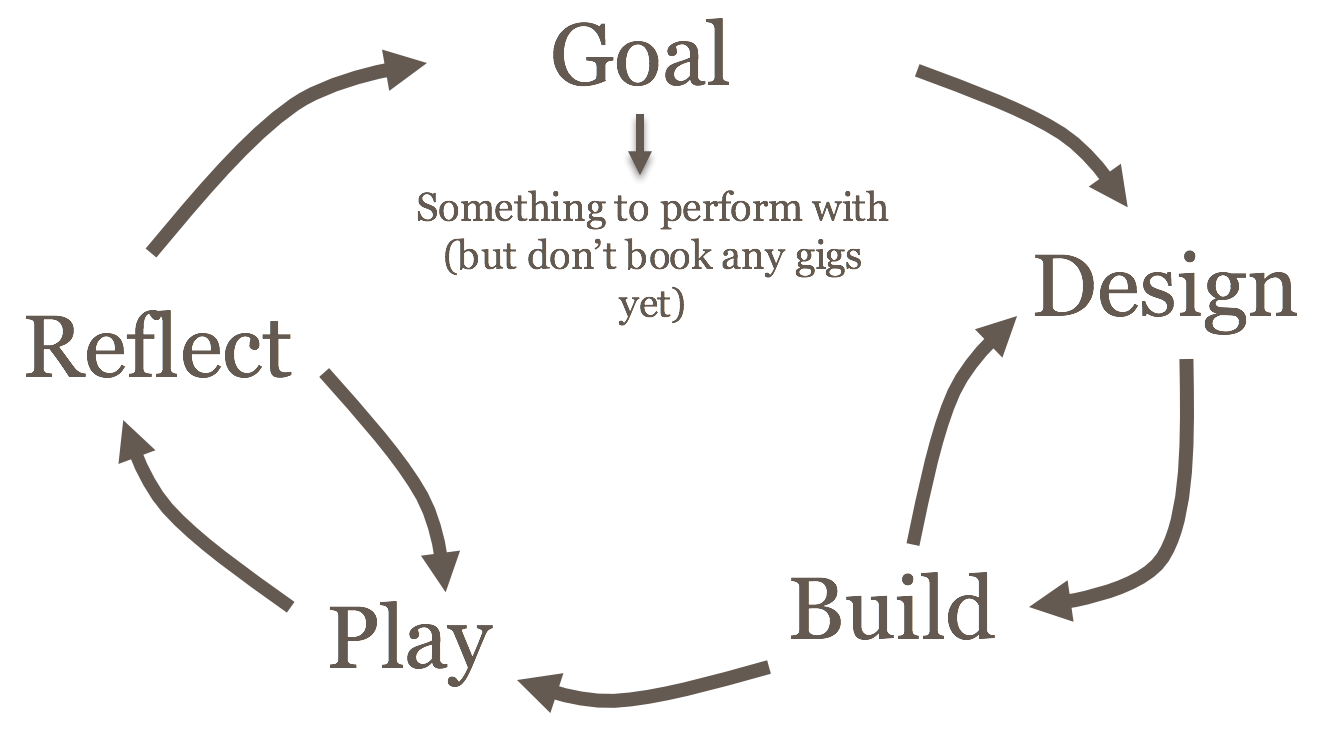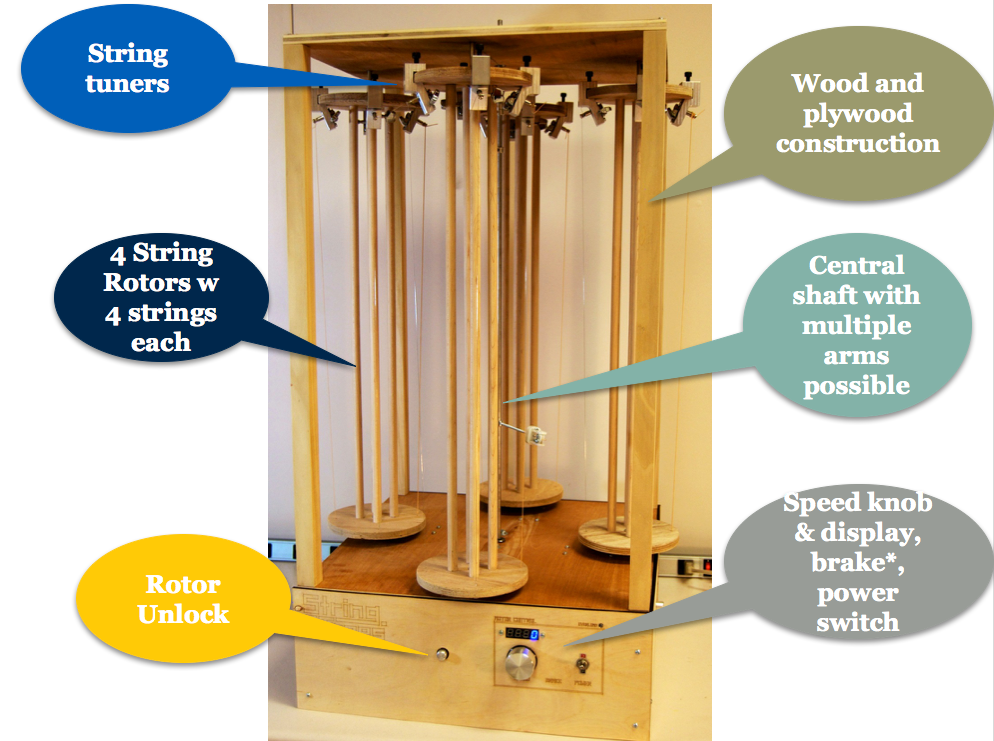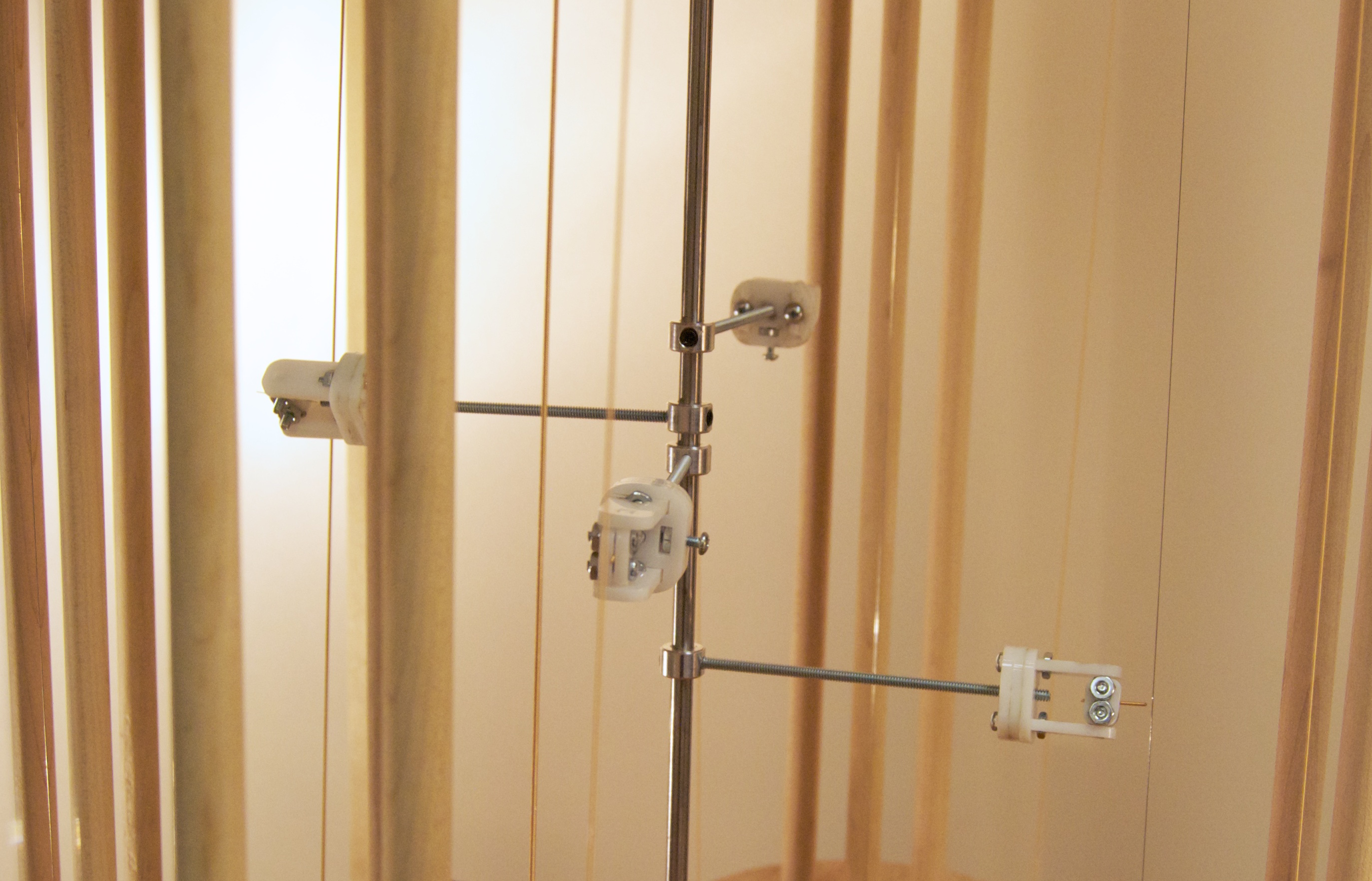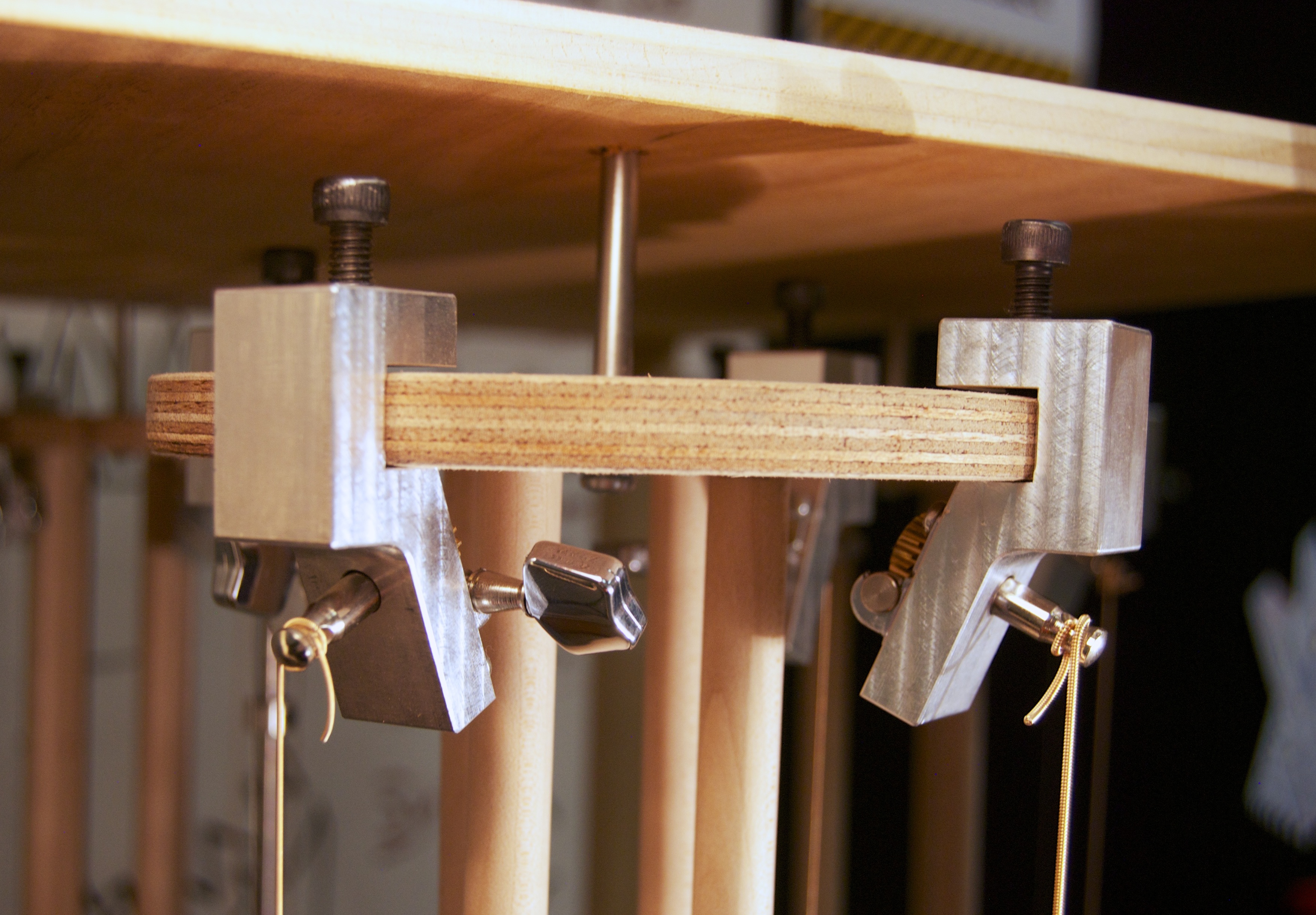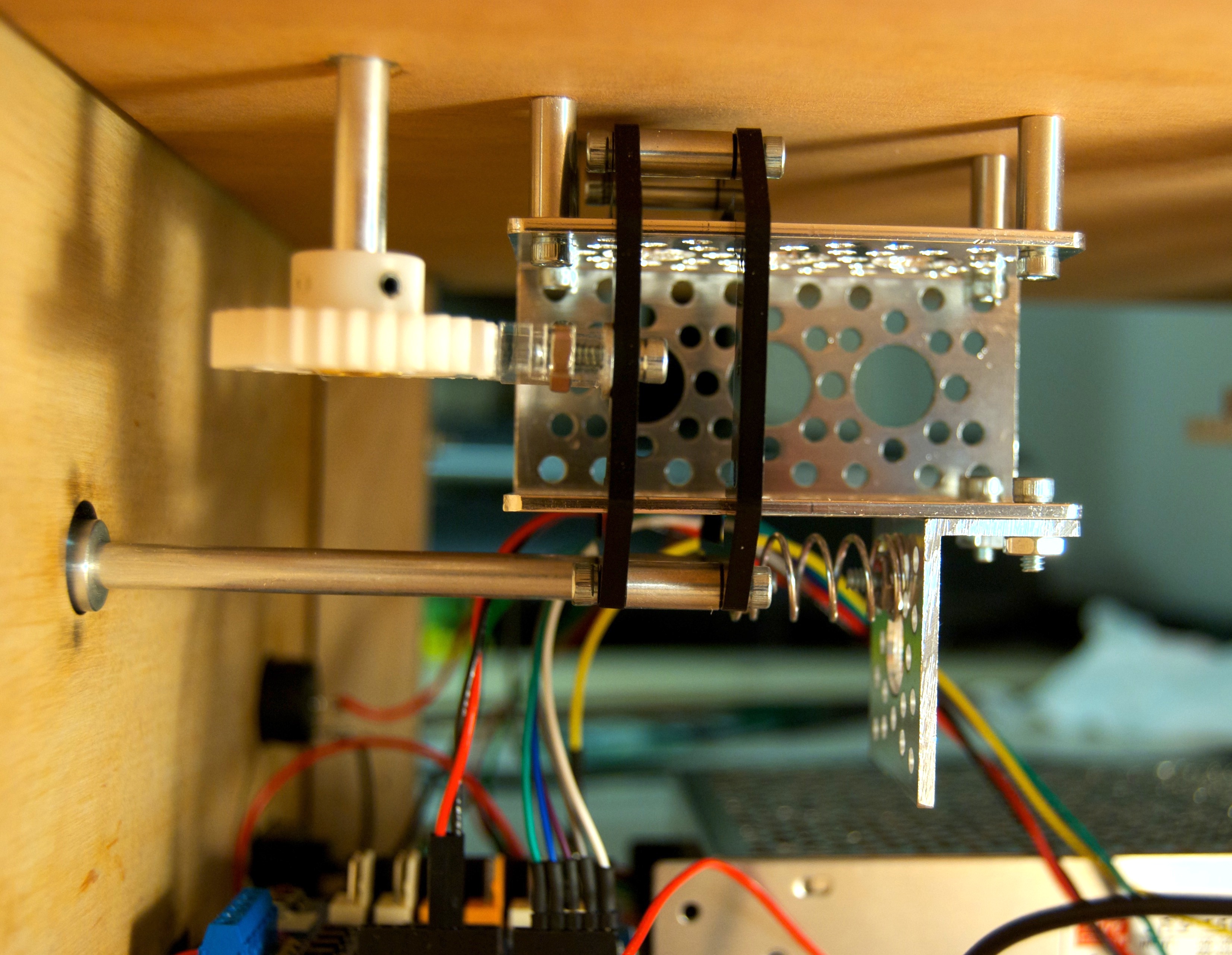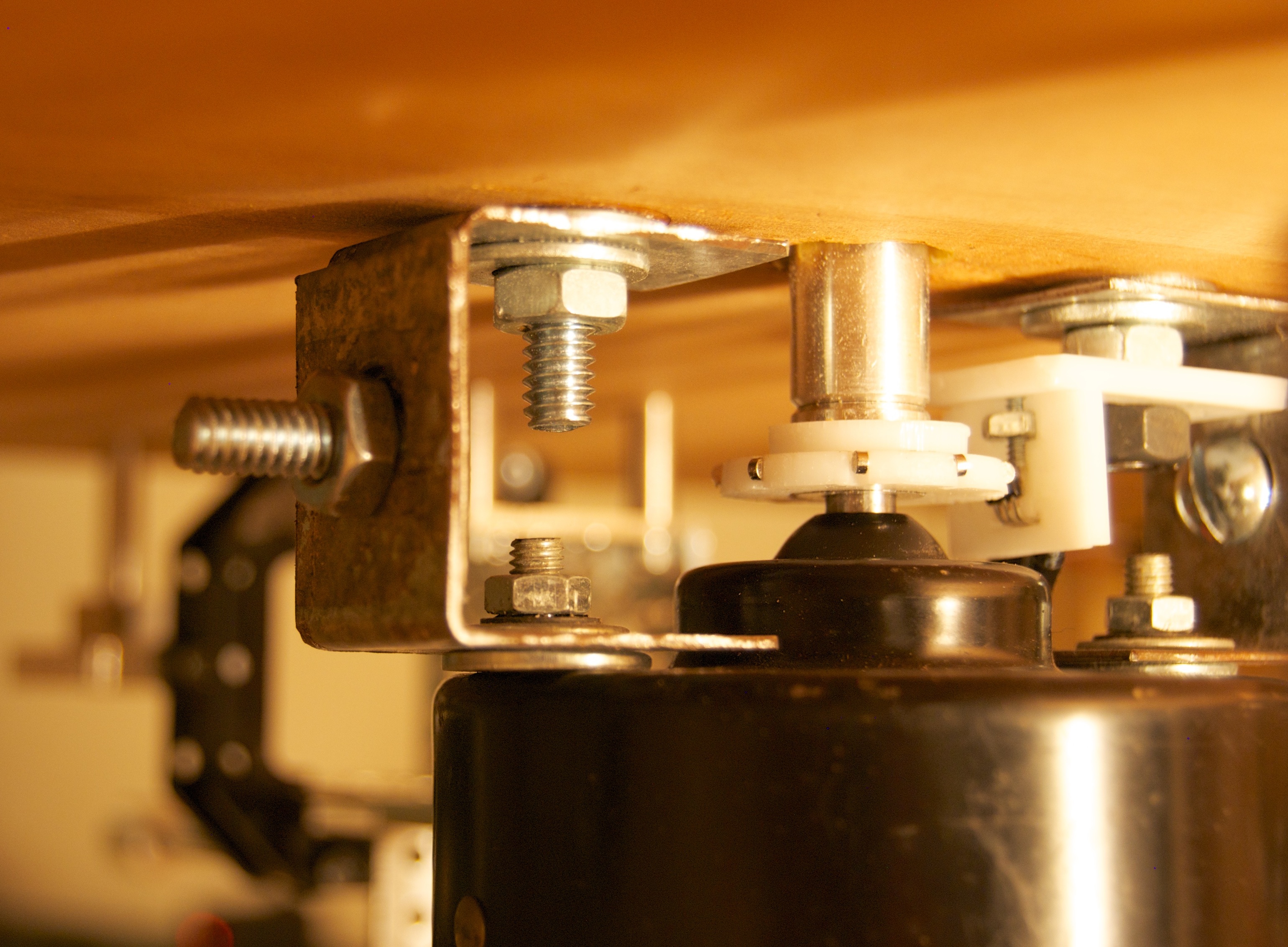Stringtrees NIME paper is here: http://www.nime.org/proceedings/2014/nime2014_449.pdf
Below is a condensed version of my NIME presentation.
Methodology
This research is set against a theoretical/philosophical background regarding the nature of human-instrument relationships, from which I defined a conceptual space to explore through design, and then engage in reflective accounting of putting the design into practice. The instrument I created isn’t mature enough to draw out a theory or generate a framework at this stage, but I do intend to report back as our practice with this system does mature.
Perspectives
I consider 4 different perspectives from which we can approach human-instrument relationships: Cybernetics, Haptics, Dynamic Systems, and Semiotics.
Process
The approach was deliberately open-ended and didn’t begin with an envisioned usage scenario, so the goal was really just to make something to perform with that explored this space I’ve identified. And I didn’t submit it to any conferences or calls assuming it would be finished in time. This is a little map of my process, from which I really just want to highlight that it is an iterative process which includes a reconsideration of the goal, which is something I think happens far too infrequently.
Initial Sketch
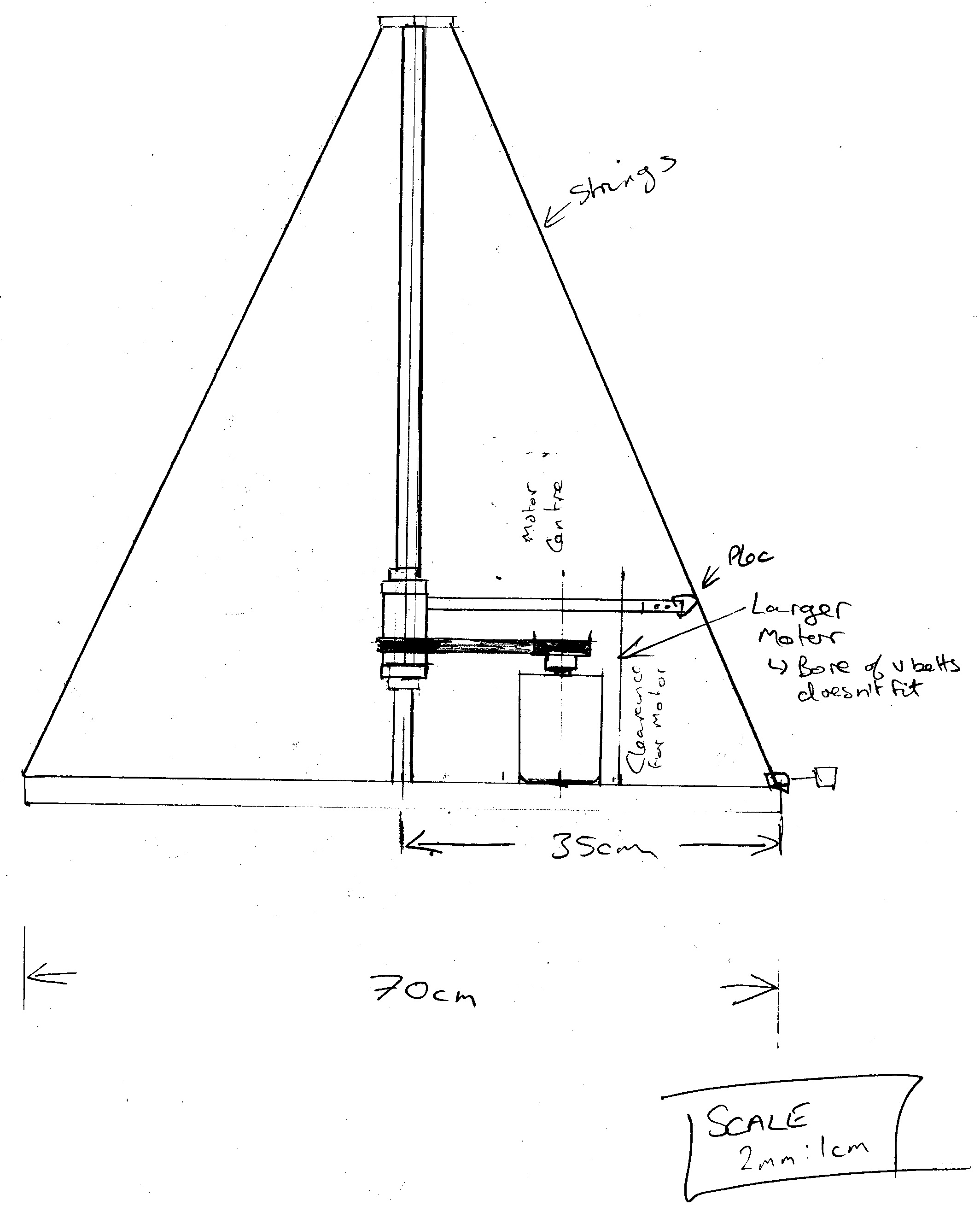
First prototype:
- Extremely robust, but very heavy, difficult to regulate
- A bit scary
Design Overview
CNC Tuners
Rotor Lock Mechanism
Observations
Innovative performance techniques emerged in response to the system, bringing aesthetic priorities and biases with them, as well as whatever implements at hand. A feature of not having a priori musical goal.
- Muting
- Tuning with “slides”
- Manual plucking
Emergent behaviors and musical surprises
- A consequence of distributed control
- Tendency to “go with” surprises
- Improvisatory character
Different Modes at High Speeds
- Primary interaction is tuning/timbre
- Sense that “the system is in control,” akin to an ornamental mode
Reflections
- Facilitated collaborative improvisation
- Performances are episodic: Stable state -> transition -> stable state
- Temporal nature / speed of automated behavior enforced different modes of interaction
Next
- Need feedback control for speed regulation
(Give more control to the system) - Explore tuning regimes
(distribute between performers) - More precise (automated?) string positioning
Social environment around the instrument
